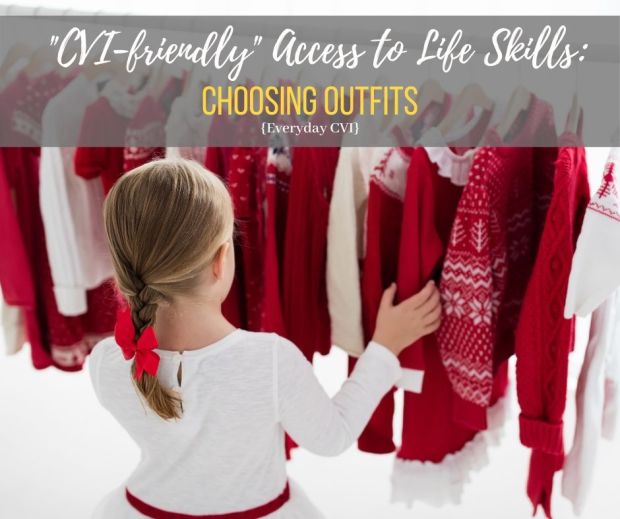This post contains affiliate links. As an Amazon Associate, I earn from qualifying purchases at no cost to you.
As soon as I received my daughter’s Cortical Visual Impairment (CVI) diagnosis in 2018, I began researching, reading, and brainstorming ways to help her begin using her vision throughout her daily routines (you can check out my introductory CVI reading recommendations here).
The very first adaptation I can recall implementing was the mealtime strategy of placing a shiny, red gift bow on the handle of Rosalie’s spoon (I think I got this idea from reading the Little Bear Sees book?). At the time, Rosalie was 7 months old and her mealtimes consisted largely of being fed purees on a spoon. Prior to my learning about CVI, she never seemed to open her mouth in anticipation of the spoon; rather, she would open her mouth only after I gently touched the spoon to her lips. In hindsight, it’s pretty obvious that she didn’t see the spoon coming!
Fast forward to placing a red, shiny bow on her spoon…and voila! Rosalie began opening her mouth as I brought the spoon towards her. That first easy adaptation literally changed our lives – and reminds me that even the simplest changes can be made to provide my daughter access to the visual world.

Our CVI mealtime strategies have evolved numerous times throughout the past 2+ years, so today I’m sharing some of what has worked for us. Perhaps it will spark new ideas for your own mealtimes!



